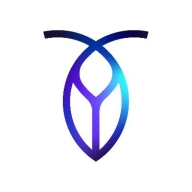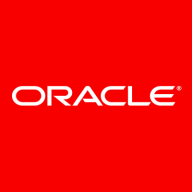

MySQL and CockroachDB are both prominent contenders in the database solutions category. MySQL stands out for its platform support and ease of use in small to medium applications, while CockroachDB showcases its strength in distributed architecture and multi-region deployment resilience.
Features: MySQL's features include multi-threaded architecture, exceptional support for replication, and cross-platform compatibility that makes it appealing for small to medium applications. CockroachDB offers high fault tolerance, a robust distributed architecture, and valuable geospatial capabilities, specifically beneficial for geo-partitioning and data residency solutions.
Room for Improvement: MySQL needs simplification in InnoDB complexity, better transaction management, and improved active directory integration. Enhancements are also required in scaling and backup processes. CockroachDB should enhance its PostgreSQL compatibility, disaster recovery features, and serverless environment handling. Improvements in enterprise features for MySQL and seamless integrations for CockroachDB are necessary.
Ease of Deployment and Customer Service: MySQL, adaptable across various infrastructures, benefits from a substantial open-source community, although its official support can be costly. It mainly sees on-premises and hybrid implementations. CockroachDB predominantly operates in public cloud environments with solid community backing but requires better official support services. Community support thrives for both platforms, but the budget for technical support varies.
Pricing and ROI: MySQL is cost-effective, especially in its open-source form, offering a high ROI as it is free in most usage scenarios, aside from some enterprise-level features. CockroachDB's pricing, though high, is justified for users prioritizing high availability and distributed systems, offering flexible pricing models. Both databases provide free entry-level options, with more expensive enterprise editions delivering additional benefits.
I have seen a return on investment with MySQL, as it allows us to manage with fewer employees, focusing on business logic rather than database management.
The issue was resolved efficiently.
I would rate the documentation and online support a 10 out of 10.
We have no issues and usually receive timely responses.
Meeting scalability requirements through cloud computing is an expensive affair.
MySQL's scalability is currently adequate, as we have increased operations from ten thousand to twelve thousand devices, and it is working fine for us.
We face certain integration issues, especially when we integrate the database with security solutions like IBM QRadar.
From my experience, MySQL was pretty stable.
For multi-region deployment, CockroachDB requires at least three plus replicas across data centers to achieve strong consistency across regions, which increases infrastructure costs including compute, storage, and networking.
When there are multiple application servers connecting to the MySQL cluster and going through the MySQL load balancer, the documentation is not user-friendly.
I would advise people thinking about using MySQL to look up if the indexing mechanism is useful for their needs and then accordingly select the right database, and also consider if relational databases make sense for their use case.
It could be more beneficial if MySQL can enhance its data masking functionality in the same way it has improved data encryption.
Oracle has different components, so if you need security, you have to procure a different license, but here everything is inbuilt and it's not costly.
CockroachDB's geo-distribution feature is superior to traditional databases.
The main feature we utilize in MySQL is the view, and I can say that it is the most valuable feature for our needs.
With Oracle, we have to buy another solution for encryption and masking, but MySQL supports native encryption, which enhances our return on investment.
It's an inbuilt feature of the database itself, and you don't have to purchase an additional license for the replication.
| Product | Market Share (%) |
|---|---|
| MySQL | 6.1% |
| CockroachDB | 4.0% |
| Other | 89.9% |

| Company Size | Count |
|---|---|
| Small Business | 7 |
| Midsize Enterprise | 1 |
| Large Enterprise | 5 |
| Company Size | Count |
|---|---|
| Small Business | 74 |
| Midsize Enterprise | 32 |
| Large Enterprise | 62 |
Cockroach Labs is the creator of CockroachDB, the cloud-native, resilient, distributed SQL database enterprises worldwide trust to run mission-critical AI and other applications that scale fast, avert and survive disaster, and thrive everywhere. It runs on the Big 3 clouds, on prem, and in hybrid configurations powering Fortune 500, Forbes Global 2000, and Inc. 5000 brands, and game-changing innovators, including OpenAI, CoreWeave, Adobe, Netflix, Booking.com, DoorDash, FanDuel, Cisco, P&G, UiPath, Fortinet, Roblox, EA, BestBuy, SpaceX, Nvidia, the USVA, and HPE. Cockroach Labs has customers in 40+ countries across all world regions, 25+ verticals, and 50+ Use Cases. Cockroach Labs operates its own ISV Partner Ecosystem powering Payments, Identity Management (IDM/IAM), Banking & Wallet, Trading, and other high-demand use cases. Cockroach Labs is an AWS Partner of the Year finalist and has achieved AWS Competency Partner certifications in Data & Analytics and Financial Services (FSI). CockroachDB pricing is available at https://www.cockroachlabs.com/pricing/
Vector, RAG, and GenAI Workloads
CockroachDB includes native support for the VECTOR data type and pgvector API compatibility, enabling storage and retrieval of high-dimensional embeddings. These vector capabilities are critical for Retrieval-Augmented Generation (RAG) pipelines and GenAI workloads that rely on similarity search and contextual embeddings. By supporting distributed vector indexing within the database itself, CockroachDB removes the need for external vector stores and allows AI applications to operate against a single, consistent data layer.
C-SPANN Distributed Indexing
At the core of CockroachDB’s vector search capabilities is the C-SPANN indexing engine. C-SPANN provides scalable approximate nearest neighbor (ANN) search across billions of vectors while supporting incremental updates, real-time writes, and partitioned indexing. This ensures low-latency retrieval in the tens of milliseconds, even under high query throughput. The algorithm eliminates central coordinators, avoids large in-memory structures, and leverages CockroachDB’s sharding and replication to deliver scale, resilience, and global consistency.
Machine Learning and Apache Spark Integration
CockroachDB integrates with modern ML workflows by supporting embeddings generated through frameworks such as AWS Bedrock and Google Vertex AI. Its compatibility with the PostgreSQL JDBC driver allows seamless integration with Apache Spark, enabling distributed processing and advanced analytics on CockroachDB data.
PostgreSQL Compatibility and JSON Support
CockroachDB speaks the PostgreSQL wire protocol, so applications, drivers, and tools designed to work with Postgres can connect to CockroachDB without modification, enabling seamless use of familiar SQL features and integration with the wider Postgres ecosystem. This includes support for advanced data types such as JSON and JSONB, which allow developers to store and query semi-structured data natively.
Geospatial and Graph Capabilities
CockroachDB also provides first-class geospatial data support, allowing developers to store, query, and analyze spatial data directly in SQL. For graph workloads, CockroachDB employs JSON flexibility to represent relationships and delivers query capabilities for graph-like traversals. This combination enables hybrid applications that merge relational, geospatial, document, and graph data within a single platform.
Analytics, BI, and Integration
To support high-performance analytics and BI, CockroachDB supports core analytical use cases and functions including Enterprise Data Warehouse, Lakehouse, and Event Analytics, and offers materialized views for precomputing complex joins and aggregations. Its PostgreSQL wire compatibility ensures direct connectivity with all relevant BI and analytics apps and tools including Amazon Redshift, Snowflake, Kafka, Google BigQuery, Salesforce Tableau, Databricks, Cognos, Looker, Grafana, Power BI, Qlik Sense, SAP, SAS, Sisense, and TIBCO Spotfire. Data scientists can interact with CockroachDB through Jupyter Notebooks, querying structured and semi-structured data and loading results for analysis. Change data capture (CDC) streams provide real-time updates to analytics pipelines and feature stores, keeping downstream systems fresh and reliable. Columnar vectorized execution accelerates query processing, optimizes transactional throughput, and minimizes latency for demanding distributed workloads.
MOLT AI-Powered Migration
Organizations often know their data infrastructure is not supporting the business, but find it too painful to change. CockroachDB’s MOLT (Migrate Off Legacy Technology) is designed to enable safe, minimal-downtime database migrations from legacy systems to CockroachDB. MOLT Fetch supports data migration from PostgreSQL, MySQL, SQL Server, and Oracle, with SQL Server and DB2 coming soon. CockroachDB also has a portfolio of data replication platform integrations including Precisely, Striim, Qlik, Confluent, IBM, etc.
Together, these capabilities ensure that CockroachDB supports both operational and analytical workloads, bridging traditional SQL applications with emerging Gen AI and ML use cases.
MySQL is an open-source database known for its ease of use and high performance. It offers features like replication and clustering, making it ideal for diverse applications. Its cost-effectiveness and LAMP integration are key advantages for businesses.
MySQL supports a variety of languages and platforms, providing reliable, scalable data management. Its graphical interface and LAMP architecture integration enhance its usability, while community support further strengthens its appeal. Challenges include scalability issues with large databases, lack of advanced clustering, and limited high-availability features. Complex queries may affect performance, and integration can pose difficulties. The outdated interface and insufficient documentation are also concerns, along with replication and backup reliability issues.
What are MySQL's key features?MySQL is widely implemented in industries such as web development, e-commerce, and finance. It's used for managing dynamic websites, powering e-commerce platforms, and supporting financial applications. Its compatibility with PHP and cost-effectiveness make it suitable for CMS platforms like WordPress. With cloud services integration, MySQL is a backend choice for scalable applications in various sectors.
We monitor all Relational Databases Tools reviews to prevent fraudulent reviews and keep review quality high. We do not post reviews by company employees or direct competitors. We validate each review for authenticity via cross-reference with LinkedIn, and personal follow-up with the reviewer when necessary.